
UNITED BY PURPOSE
DEMOCRACY, GRASSROOTS, & THE POWER OF PARTICIPATION





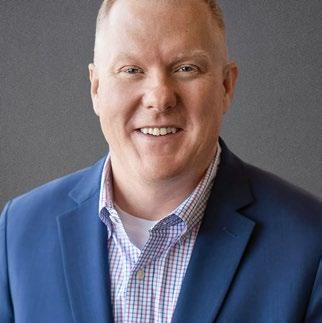


DEMOCRACY, GRASSROOTS, & THE POWER OF PARTICIPATION






BY JEFF WADSWORTH PRESIDENT & CEO
As we prepare to celebrate Independence Day, we’re reminded of the enduring power of democracy.
The Fourth of July is more than fireworks and backyard barbecues, it’s a time to reflect on the bold spirit that sparked a revolution and created our great Republic founded on liberty, representation, and shared responsibility.
These same ideals carry through in the way your electric cooperative operates. As a member-owned, notfor-profit cooperative, we’re guided by democratic principles. Each member has a voice, and together we shape the future of our energy system.
This isn’t just about how power gets to your home, it’s about how power lives in your hands – both literally and figuratively.
That’s why now, more than ever, we encourage our members to get involved through our Cooperative Voices grassroots advocacy program. Co-op Voices is a way for you to stay informed, speak up on energy-related issues that could impact us locally and nationally, and protect the values of reliability, affordability, and local control.
We anticipate an active year ahead in the legislative arena, particularly at the state level. While we don’t have all the specifics yet, your engagement now will help us be ready when it’s time to act. By adding your voice, you help ensure that the decisions made in Denver reflect the realities we face here in Northern Colorado.
Getting involved is easy.
To join Co-op Voices , visit www.pvrea.coop/co-op-voices to learn more and sign up. You’ll receive occasional updates on key legislative issues and opportunities to make your voice heard when it matters most. It’s a simple but powerful way to stand up for your cooperative and our community.
Our commitment to democratic values also extends to the next generation. Each year, we sponsor local high school students on an unforgettable trip to Washington, D.C., through the Electric Cooperative Youth Tour. These students learn firsthand how our government works, they meet elected leaders, and explore the deep connection between civic involvement and cooperative values.
Learn more about the D.C. Youth Tour online at www.pvrea.coop/for-our-kids/.
From the founding of our nation to the operation of your cooperative, democracy depends on participation. As we celebrate July Fourth, let it be a reminder that your voice matters – whether at the ballot box, in the halls of Congress, or right here at your local electric cooperative.
As we gather with friends and family, please celebrate safely and responsibly. Wishing you all a Happy Fourth of July!
ABOUT YOUR CO-OP
PVREA serves energy solutions to more than 57,000 homes and businesses in Boulder, Larimer, and Weld counties. We are a memberowned co-op, led by those we serve.
OUR MISSION
We are committed to providing safe, reliable, efficient energy solutions with exceptional service to our members.
CONTACT US 1.800.432.1012 pvrea@pvrea.coop www.pvrea.coop
MAILING ADDRESS
Poudre Valley REA 7649 REA Parkway Fort Collins, CO 80528
SOCIAL
facebook.com/PoudreValleyREA instagram.com/poudre_valley_rea youtube.com/PoudreValleyREA
BOARD OF DIRECTORS
Chair
Peter Hyland
Weld County
Vice Chair
Bryan Ehrlich
Larimer County
Secretary Thaine Michie
Larimer County
Director
Steven Anderson
Larimer County
Director
Boulder County
Sheryl Dryer Henderson
Larimer County


Providing Financial Help in the Weld RE-4 School District to Prevent Homelessness
A sudden eviction notice slips under the door. A utility shut-off looms. For some families in Windsor, Severance, and West Greeley, these are not distant worries — they are crises that, if left unchecked, can topple a parent’s stability or a child’s well-being.
Facing these obstacles, many are thrust into a downward spiral of stress, fear, and isolation. At such tipping points, a lifeline can mean everything.
That lifeline can be Stepping Stones of Windsor, a local nonprofit organization dedicated to intervening before momentary difficulties turn into long-term displacement. Their mission is to ensure that “everyone has access to decent, stable, affordable housing and provide emergency assistance to prevent homelessness,” said Tessa Currie, Stepping Stones Board Member.
Founded in 2004, Stepping Stones assists residents of the Weld RE-4 School District in helping families avoid the worst by providing emergency financial assistance in three critical areas: eviction prevention, utility shut-off rescue, and first-month rent (when security deposits are already paid).
Working one-on-one with clients, Stepping Stones reviews bills, verifies notices, and places payments directly with landlords or utility providers, ensuring families stay in their homes safely. In 2024 alone, they distributed over $75,000, helping more than 300 neighbors across over 100 households.
Remarkably, Stepping Stones operates with zero paid staff. Board members and community partners ensure over 99% of funds go straight into the community they serve.
If your family or someone you know is facing eviction, utility shut-offs, or needs help with first-month rent, Stepping Stones makes assistance accessible in a variety of ways.
Those in need can access resources at steppingstonesofwindsor.com , by emailing windsorsteppingstones04@gmail.com , or by calling 970-821-7549
They also connect families with partners offering long-term support such as food, infant or childcare needs, and mental health support.
“Community support is critical to Stepping Stones’ ability to fulfill its mission,” said Tessa. “Donations fund direct aid, volunteers expand our reach, and events raise the awareness needed to meet growing local needs.”
You can help by donating, volunteering, hosting a fundraiser, or simply spreading the word. Every effort helps protect a family from the destabilizing impact of eviction or utility shut-off.
In times of crisis, nothing is more powerful than a collective step forward. Together, we can keep families secure, children thriving, and our community strong. To support, donate, or learn more, go to steppingstonesofwindsor.com

FAIR DATES: August 1–5
FAIR LOCATION: The Ranch Events Complex, Loveland
MEMBERS WILL RECEIVE DISCOUNTS on Rodeo entry tickets in their July bills.
• 7/1 Rodeo tickets available at the Box Office
• 7/26 Fair Parade, downtown Loveland
• 7/31 Western Waves Queen’s BBQ — support our rodeo royalty
• 8/1-5 Larimer County Fair & Carnival Americana – join the fun & visit our booth located near Carnival Entrance
• 8/3 Pancake Breakfast
• 8/3–5 PRCA Rodeo
• 8/6 Junior Livestock Sale
Scan to learn more or go to www.treventscomplex.com/events/larimer-county-fair

You can help the American Cancer Society fund cancer research, patient support, and advocacy efforts to end cancer as we know it, for everyone.
Date: Saturday, July 19 | Time: 4pm to Midnight
Location: University Schools, Greeley
Learn more about Relay For Life or join our team to help fundraise for the fight against cancer. Scan the code for more information.

As the weather warms each year, we see an increase in scammers and solicitors attempting to influence our members. Remember these tips to stay safe when approached.
• Be cautious of unexpected calls and visits, especially from those claiming to work with PVREA.
• If it were legitimate, you would’ve heard from us first! We always try to notify our members when PVREA crews or contractors will be working in your area.
• Scammers often promise free electricity, lower rates, or energy audits — usually to access your home or personal information.
• Prioritize your safety. If in doubt, call us at 800.432.1012 to confirm someone is with PVREA.

• Let us know if you’ve been approached. We can alert others in your area.
• Your report could protect others in your community!
If in doubt, call us during business hours at 800.432.1012
Keep your email up to date to get important account notifications. Update your contact info in your online account or the PVREA App.
When temperature rises, so can your energy bills. By adopting a few smart energysaving habits, you can stay comfortable while keeping your electric use in check.
Adjust Your Thermostat: Set your smart thermostat to the highest comfortable setting when you’re home and increase it further when you’re away. A programmable or smart thermostat can automate these settings to maximize your savings.
• Find rebates for smart thermostats at www.pvrea.coop/rebates
Use Ceiling Fans Wisely: Fans cool people, not rooms. Only run ceiling fans in occupied rooms and remember to set them to rotate counterclockwise in the summer months.
Keep the Sun Out: Close blinds or curtains during the hottest part of the day, especially on south-
and west-facing windows. This simple step can reduce indoor heat gain by up to 45%.
Cook & Wash Smart: Use the microwave, toaster oven, or grill instead of the stove to avoid heating up your home.
Seal Air Leaks & Insulate: Prevent warm air from entering your home by sealing air leaks and ensuring proper insulation, especially in attics and walls. This will help your cooling system work more efficiently.
Find more home energy management best practices at www.pvrea.coop
Source: U.S. Department of Energy
Co-op Connections is a complimentary benefit for our members and businesses, offering local and national discounts.
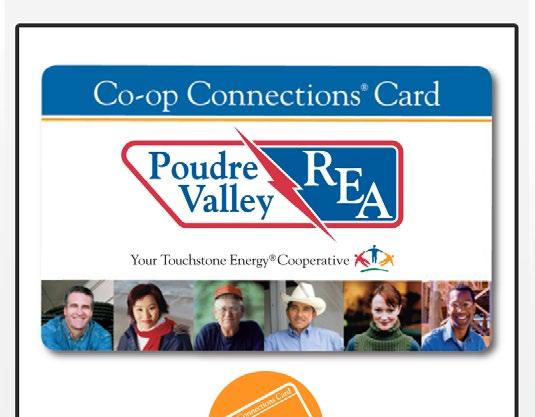
Check out the deals and discounts available today!

Scan to start saving or go to www.pvrea.coop/co-op-connections

HERE’S WHERE TO FIND US
• 7/10 Windsor Summer Concert Series
• 7/19 Relay For Life of Northern Colorado
• 7/26 Fair Parade, downtown Loveland
• 7/31 Western Waves Queen’s BBQ
• 8/1-5 Larimer County Fair & Carnival Americana
• 8/3 Pancake Breakfast
• 8/3-5 PRCA Rodeo
• 8/6 Junior Livestock Sale
• 8/21 Windsor Summer Concert Series
• 8/23 Severance Days
• 9/6 Rist Canyon Mountain Festival
• 10/4 Berthoud Oktoberfest

Follow us on social to stay up to date on where your cooperative will be this summer. Scan the code to see our events schedule.
During summer months, run large appliances that emit heat, such as clothes dryers and dishwashers, during the evening when the outdoor temperature is lower.
Running heat-emitting appliances in the evening will reduce indoor heat gain during the day when outdoor temperatures are highest, ultimately keeping your air conditioner from working harder than necessary.

If you are familiar with The New York Times crossword puzzles, you’ll know that they start off on the easier side at the beginning of the week. The puzzles get more difficult each day as the week goes on, until the ultimate challenge: the Sunday puzzle.
I grew up watching my mom solve Sunday puzzles; she grew up watching her grandma solve crossword puzzles, too. It’s with that tidbit of information that you could deduct that I come from a long line of “Word Nerds” (as my husband likes to say).

One thing I look forward to each morning is solving a Times crossword puzzle with my coffee. It has become a simple little ritual, a slow start to the day.
Admittedly, I have never completed a Times Sunday puzzle. I have a small book of Monday and Tuesday puzzles; one takes me about 20 minutes to solve. Though on the easier side, they still challenge my brain to think outside the box, so to speak, to come up with answers to the clever clues.
My team and I have been toying around with the idea of fitting a puzzle into the magazine, and we were able to make it happen in this issue. Turn to page 33 to find it.
We hope you enjoy solving the puzzle. Email me at kcoleman@coloradocountrylife.org and let me know what you think!

STAFF
Cassi Gloe, Publisher cgloe@coloradocountrylife.org
Kylee Coleman, Editor kcoleman@coloradocountrylife.org
Melinda Taylor, Editorial Assistant mtaylor@coloradocountrylife.org
SUBSCRIBERS
Report change of address to your local cooperative. Do not send change of address to Colorado Country Life. Cost of subscription for members of participating electric cooperatives is 30 cents per month, paid from equity accruing to the member. For nonmembers, a subscription is $15 per year in state/$20 out of state.
advertising@coloradocountrylife.org 720-407-0712
National advertising representative: American MainStreet Publications 611 S. Congress St., Suite 504 Austin, TX 78704 | 800-626-1181
Advertising Standards
Publication of an advertisement in Colorado Country Life does not imply endorsement by any Colorado rural electric cooperative or the Colorado Rural Electric Association. Colorado Country Life (USPS 469-400/ISSN 1090-2503) is published monthly by Colorado Rural Electric Association, 5400 Washington St., Denver, CO 80216-1731. Periodical postage paid at Denver, Colorado. ©2025, Colorado Rural Electric Association. Call for reprint rights. View advertising and editorial policy terms and conditions online at coloradocountrylife.coop.
Denver Corporate Office 5400 Washington St. Denver, CO 80216
info@coloradocountrylife.org 303-455-4111
Editorial opinions published in Colorado Country Life magazine shall pertain to issues affecting rural electric cooperatives, rural communities, and citizens. The opinion of CREA is not necessarily that of any particular cooperative or individual.


By Mary Peck
When you bring flowers into your home, it’s more than just the bouquet that blooms. A famous Harvard study found that fresh flowers can lead people to feel kinder and more compassionate, have fewer negative feelings, and have more energy at work.
Maybe all those positive vibes are why so many people find flowers so enchanting. Botanist Luther Burbank described their magic well when he said, “Flowers always make people better, happier, and more helpful; they are sunshine, food, and medicine for the soul.”
Whether you grow your own flowers, buy a cut bouquet at the grocery store or farmers market, or visit one of Colorado’s many pick-your-own flower farms, a few simple arranging tips can add to your enjoyment of them.
To start, consider using a plain vase or container, which creates more focus on the flowers themselves. And be creative: a pitcher, shallow bowl, even a vintage tin can elevate a basic bouquet. Thrift stores are great places to look for these.
Fill your container with fresh lukewarm water. If the container has a wide opening, make a grid across the top using waterproof floral tape and place the stems in the sections of the grid for support. A flower
or pin frog — a device that secures stems from the bottom of a vase — is also a great tool.
As you place the flowers, give each stem a sharp, angled cut, which will help it take in more water. A common guideline is for the tallest item in the arrangement to be no more than one and a half times the height of the container. Cut some stems shorter so they sit at the rim of the container, and leave others taller to create height and interest. Vary the sizes, colors, and heights of flowers to form a balanced overall shape, rotating the container as you place them to ensure the arrangement looks good from all angles.
Filler flowers and greenery can help round out your arrangement and fill in any empty spots. Filler pieces are another opportunity to get creative: Small branches from a shrub, tall grasses, or herbs can add unique beauty to your arrangement.
Finally, consider where you’ll most enjoy your flowers. While the kitchen, dining room, or living room are common settings, seeing flowers on your desk, nightstand, or even on a bathroom vanity may very well bring a little unexpected joy to your day.
Mary Peck connects Coloradans with practical tips, ideas, and information to help them prosper.














By Craig Johnson
Fishing with “flies” traces its origins back to the ancient Greeks, who would catch “fish with speckled skins” using hooks dressed with crimson wool and wax-colored feathers from a rooster’s neck. Since these humble beginnings, the art of fly tying has evolved into a hobby all its own.
In the 1800s, explorers filled the museums and zoos of Europe with colorful bird species from around the world, such as the king bird of paradise of Indonesia with its bright red feathers and the resplendent quetzal of Central America. In addition to the scientific world, their brightly colored plumage caught the eye of fly tiers, who used their feathers to create complex and beautiful flies, sometimes incorporating the feathers of more than a dozen different birds in a single fly. Scottish fly tier Jock Scott, for example, tied his namesake fly using the feathers of toucan, macaw, Indian crow, and more. These vintage flies are considered collectors’ items, often selling for hundreds of dollars each — not the kind of investment you want to see destroyed in the maw of a trout or salmon, no matter how nice the catch might be.
While tying ornate flies with exotic feathers was a pastime of the well-to-do in Europe, a distinctly more democratic version of fly tying evolved in the Catskills and Adirondacks of the northeastern United States. These practical flies used drab-colored fur for bodies, feathers tied in an upright position to imitate the wings of a bug, and wraps of hackle to make them float and give an impression of wiggling
legs. These patterns, which predominate today, relied on common materials readily available to the average angler, consistent with the U.S. ideal that fishing is not limited to the aristocracy.
There are now fly patterns for every conceivable bug in every size, shape, and color imaginable. A fly doesn’t have to be a perfect imitation to catch fish. Take the Copper John, a favorite here in the Rocky Mountain region, which consists of a split tail of goose biots (pointy little feathers taken from the leading edge of the wing of a goose), a body of wrapped copper wire, a thorax made of green ostrich herl, a dab of hard epoxy covering a plastic strip on the back to give it some flash, and a shiny bead head. It takes forever to tie and looks more like something you would read about in a sci-fi novel than anything you would find in the natural environment. But the size and shape resemble a little bit of everything and nothing at all, making it irresistible to trout.
There is something special about catching a fish with a fly, especially one you tied yourself; it adds a whole new dimension to the art of fly-fishing. If you want to add a new twist to your fly-fishing experience, take a class or buy a book and try tying a fly of your own. Who knows — you might catch the fish of a lifetime.
Craig Johnson is CREA’s director of policy and strategy/general counsel, and an avid fly-fisher and outdoorsman in his spare time.
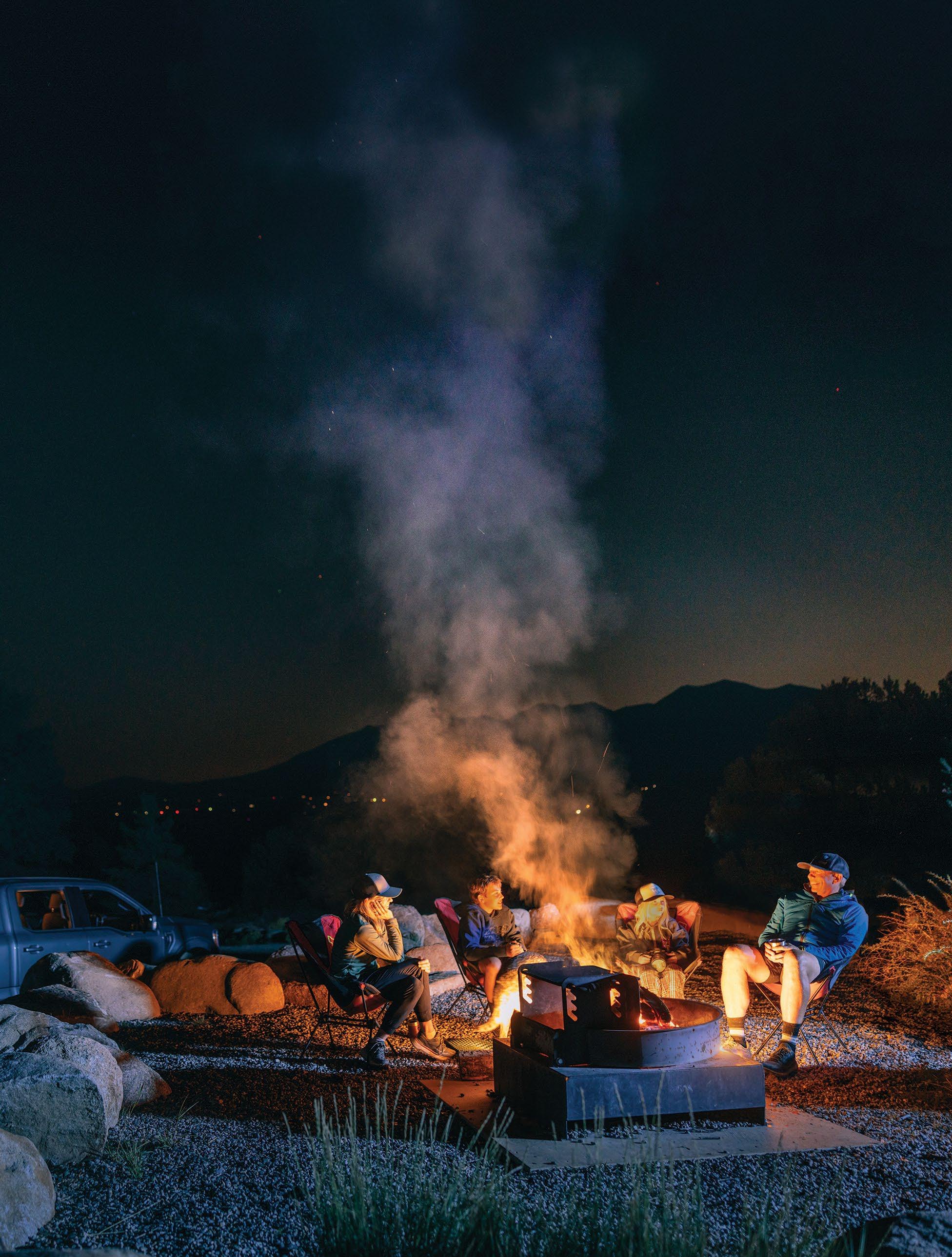


Get a $29 Keep Colorado Wild Pass with your next vehicle registration to create sweet summer memories. The pass gives you entry to all state parks and supports wildlife conservation.

By Scott Flood
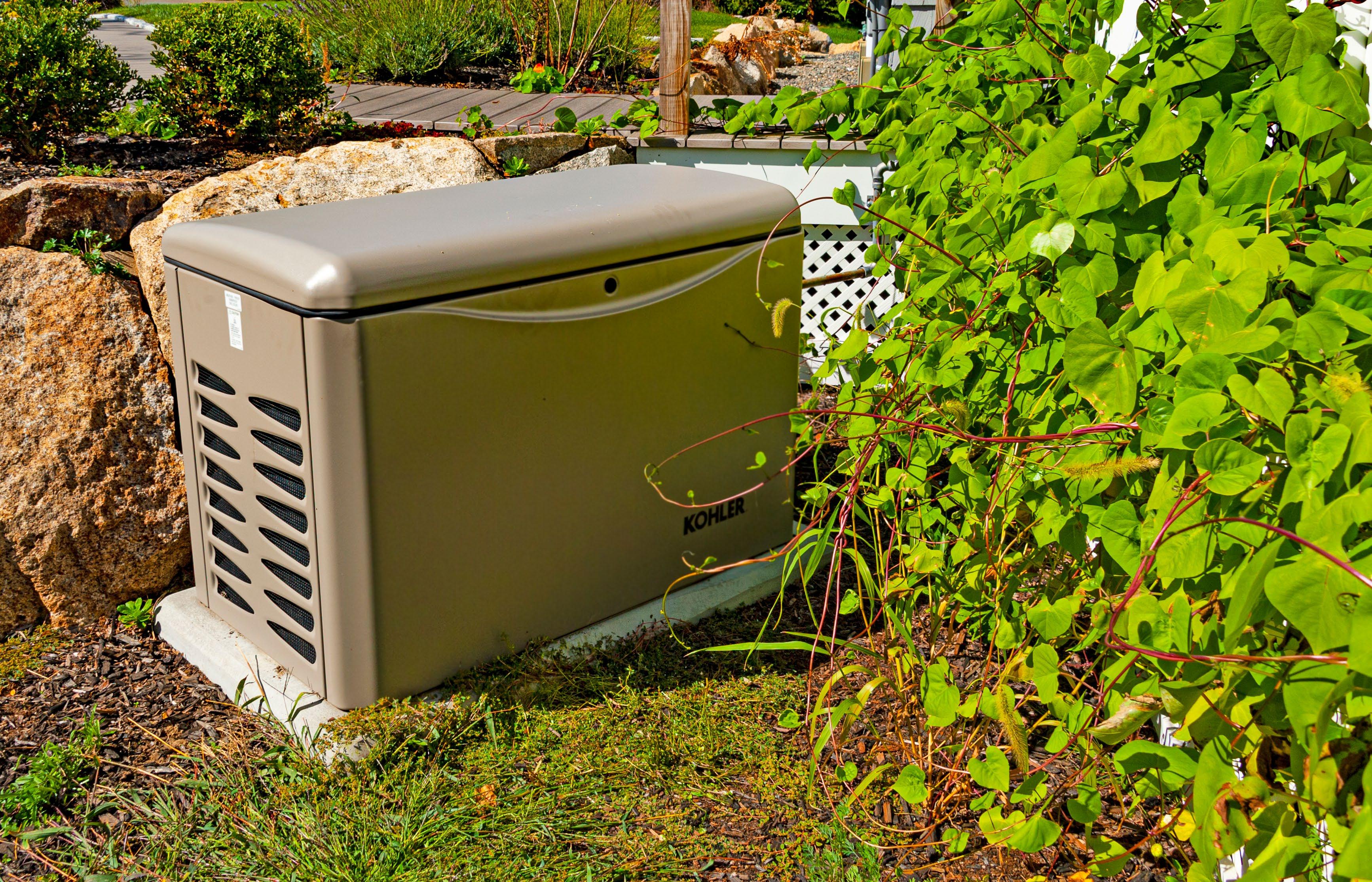
The wind howls outside your windows as a major storm system blows through the area in the late evening. Your lights flicker for a moment or two before you’re plunged into darkness. The social media feed on your phone is packed with reports of damage and power outages, and the storm shows no sign of letting up for hours.
Fortunately, you had the foresight to buy a backup generator big enough to handle your refrigerator, freezer, and other needs. Flashlight in hand, you attach extension cords. Within minutes, you hear the quiet humming that tells you they’re working again.
Colorado’s electric cooperatives understand power outages are a major inconvenience, and we do our best to prevent them. But when severe weather rolls through, outages can sometimes stretch into several hours after a major storm.
Lineworkers may have to check many miles of power lines to pinpoint the problems before they can begin their work to restore service. Many co-op members consider buying backup generators to provide for their family’s needs while waiting for service to resume.
Backup generators fall into one of two categories. Standby generators are permanently wired into the home’s electrical system by a qualified electrician. They come in a variety of sizes, so homeowners can match the generator to their home’s power needs.
Portable generators, as the name implies, can be moved to wherever they are needed. Because they’re small enough to move, they generally provide less power than standby models. Most use gasoline or diesel fuel, and when they’re operated correctly, both types provide a safe source of backup power.
Some homeowners make the mistake of plugging their backup generators directly into a wall outlet or connecting them to their home’s electrical panel. Beyond the significant risk of electrocution and fire that can create, plugging generators directly into your outlets can send the voltage your generator creates into the power lines connecting your home to the electric grid. That creates a dangerous condition called backfeed, which can seriously injure the lineworkers who are working hard to restore your electricity, as well as anyone who accidentally comes in contact with power lines. Backfeed can also damage the generator.
Standby generators are required to have what’s known as a transfer switch, which should be installed by a qualified electrician. The transfer switch creates a barrier between your home’s electrical system and the outside wires, so backfeed cannot occur. When the transfer switch senses that power has been restored, it switches the power source from the generator back to the outside lines.
The biggest danger associated with backup generators is invisible and deadly. Backup generators burn fossil fuels that produce a variety of gases, most notably carbon monoxide. According to the Consumer Product Safety Commission, one portable generator can produce as much carbon monoxide as hundreds of cars. The agency reports that nearly 100 people in the United States lose their lives each year because of carbon monoxide poisoning from backup generators. That’s why generators should only be used in dry, well-ventilated areas away from your home and garage.
Carbon monoxide gas is not only invisible, but it’s also odorless. The National Institutes of Health warns that carbon monoxide has the potential to kill in as little as five minutes. People exposed to carbon monoxide typically become dizzy, feel nauseated, and experience headaches. Often, they lose consciousness before noticing any symptoms. Anyone exposed to carbon monoxide should be moved to fresh air immediately.
If you purchase a portable backup generator, protect your home and family by taking the time to read the manufacturer’s instruction manual. Never use a portable generator in rainy or wet conditions unless
you keep it shielded from moisture — just be sure to also keep it well ventilated.
When starting a portable generator, make sure nothing is plugged into it. You can reduce the potential for damage to your appliances and lighting by turning them off. After the generator starts, plug them in and turn them on one at a time to make sure you aren’t overloading your generator’s capacity. Unplug appliances from the generator before turning it off. Unless the manufacturer recommends otherwise, always turn the generator off and allow it to cool before adding fuel.
Finally, as with many home appliances, regular maintenance is the key to ensuring your portable generator operates safely for years to come. When storing it, drain the fuel from the tank. In addition, check the oil and fuel levels, filters, and other components once each season so you know it will be ready to run safely and efficiently the next time a big storm blows through.
Scott Flood writes on a variety of energy-related topics for the National Rural Electric Cooperative Association, the national trade association representing nearly 900 electric co-ops.
Always contact your electric co-op first if you want to connect a generator to your electric panel. Improperly installed generators can create backfeed, which is dangerous to your co-op’s linecrews and the community.
• Before you purchase a generator, do your research and purchase the correct size for your needs. Make a list of essential appliances and devices you’ll need to power during an outage, then total the required wattage.
DISCLAIMER: Safety requirements may differ based on the type of generator you purchase. Always read the instruction manual and know how to shut off the generator quickly.
What it will power
Fridge and a few smaller items such as a lamp or a phone charger.
Fridge, laptop, five to 10 lights, phone charger, and a 10K BTU air conditioner.
Fridge, gas furnace, 10K BTU air conditioner, dishwasher, multiple lights, TV, laptop, and more.
Powers nearly all home appliance and electronics simultaneously.
Enter to win an outdoor blanket to bring on your stargazing adventures this summer! This blanket has a waterproof outer shell, rolls up for carrying and storage, and is machine washable.
Turn to page 18 for the best places to view the night skies.
To enter the contest, scan this QR code or fill out the form at coloradocountrylife.coop/ ccl-monthly-giveaway
If you need another way to enter our contests, send a letter or postcard with your name, phone number, address, and the name of your electric co-op to 5400 Washington St., Denver, CO 80216.
We will randomly draw one name to win the blanket on July 20.



•
•
•
•





































By Melinda Taylor Editorial Assistant
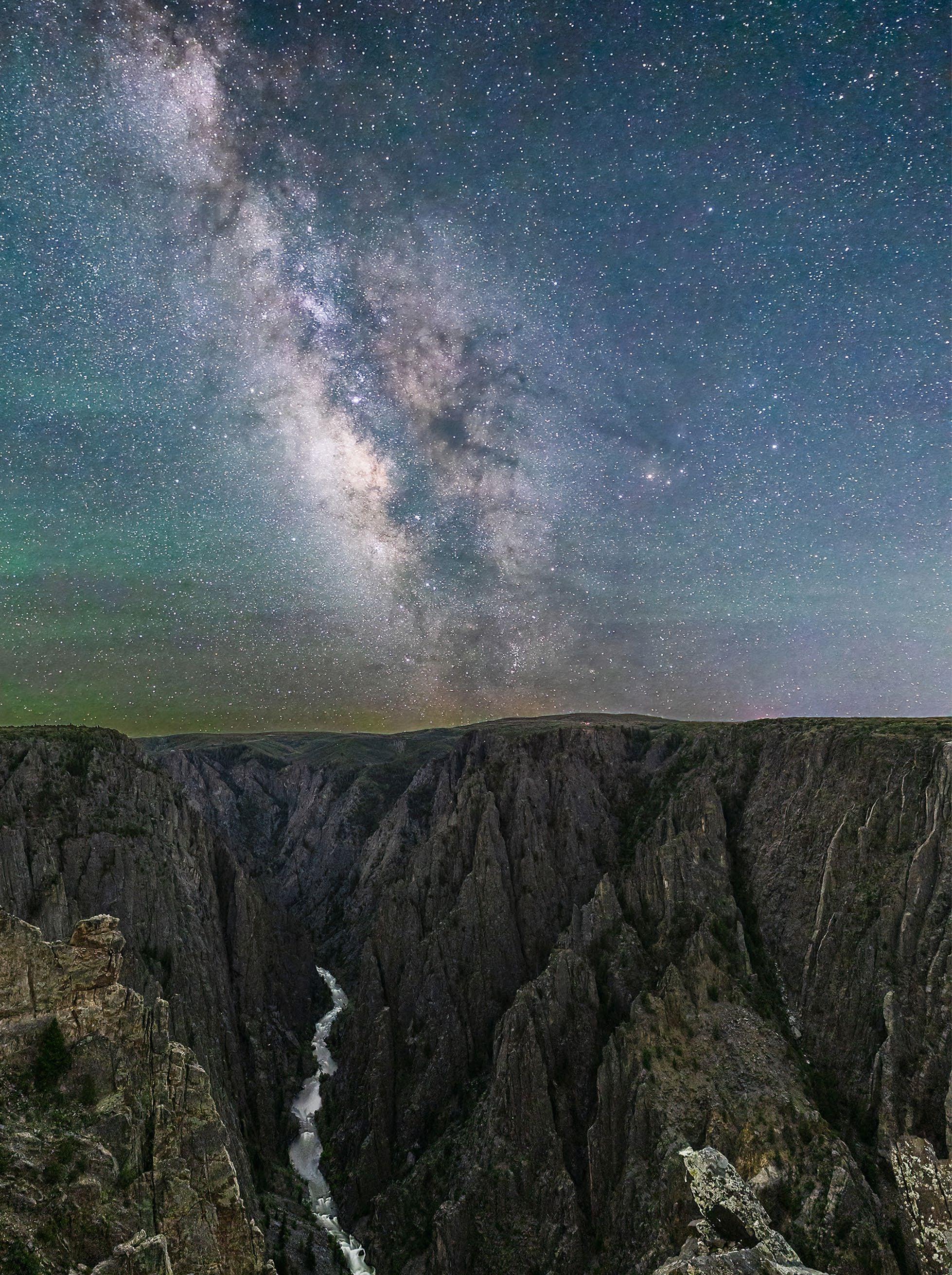
The awe-inspiring Perseid meteor shower will be on display this summer from July 17 through August 23. The very best time for viewing is in the early morning hours before dawn. Sometimes it’s hard to escape the bright lights of cities and towns, but thanks to public support, Colorado boasts 12 certified Dark Sky Parks and six Dark Sky Communities. Almost anyone in Colorado with reliable transportation can access a certified Dark Sky Place within 90 minutes.
According to DarkSky International, a certified Dark Sky Park is “land possessing an exceptional or distinguished quality of starry nights and a nocturnal environment that is specifically protected for its scientific, natural, or educational value, its cultural heritage, and/or public enjoyment.” A Dark Sky Community is a city or town that has shown dedication to night-sky preservation through outdoorlighting ordinances, education, and other efforts.
DarkSky International strives to combat the negative effects of light pollution around the world, protect nocturnal species, and allow astronomers to conduct research. It began in 2001 and has certified more than 200 places on Earth as Dark Sky Places. For more information on DarkSky International, visit darksky.org. For Colorado-specific information, visit darkskycolorado.org.
1. Black Canyon of the Gunnison National Park
2. Browns Canyon National Monument
3. Curecanti National Recreation Area
4. Dinosaur National Monument
5. Florissant Fossil Beds National Monument
6. Great Sand Dunes National Park and Preserve
7. Gunnison Gorge National Conservation Area
8. Hovenweep National Monument
9. Jackson Lake State Park
10. Lake Fork Earth and Sky Center
11. Mesa Verde National Park
12. Top of the Pines
1. Crestone
2. Norwood
3. Nucla and Naturita
4. Paonia
5. Ridgway
6. Westcliffe and Silver Cliff

As we think ahead to the season of shorter days and twinkling lights, we’d like to make space to appreciate the people who bring light into our lives.
Has someone helped you through a hard time by saying a kind word, sharing a warm meal, or just by being there? Maybe it was a friend who made you laugh when you needed it most, a neighbor who stepped in when you were struggling, or a stranger whose simple act of kindness stuck with you.
We’d love to hear your story for our December 2025 issue. Keep it short and heartfelt — we’re looking for the everyday stories that remind us how powerful a little light can be. Content may be edited for space and clarity.
• Deadline: September 20
• Word count: 200–300 words
• Submit by
• Email: editor@coloradocountrylife.org
• Online: coloradocountrylife.coop/light-in-the-dark
• USPS: Colorado Country Life, Attn: Editor, 5400 Washington St., Denver, CO 80216
Let’s shine a little light together.
It’s brutal work. I’m at 12,000 feet on an eroded trail on Mount Quandary outside Breckenridge with a team of volunteers, improving the path leading up one of Colorado’s most popular fourteeners. But my shoulders and lower back resent every swing of my Pulaski. Beside us is a Jenga pile of logs that we need to pick up and carry using a vice-like metal claw device and wrestle into position as stair treads. Then we must pulverize rocks with pickaxes to backfill the gaps and secure them in place. Breaking rocks and carrying logs at 12,000 feet ... it’s not a walk in the park.
I’m here as part of a volunteer weekend organized by the Colorado Fourteeners Initiative, bettering the trails for the 300,000 hikers who climb Colorado’s peaks every year and bring $76 million into the state’s economy. Beside me is filmmaker and high-alpine mountaineer Renald Ozturk, as well as crew members from Rocky Mountain Youth Corps, one of eight accredited organizations making up the Colo rado Youth Corps Association. Clamping the device’s metal jaws around a log, we tandem-waddle it into place, tap it down, and begin shoveling.
I can’t say, “This wasn’t in the brochure,” because it is. This is the daily routine for the more than 2,000 conservation service corps crew members in the state who last year improved or maintained 752 miles of trails and mitigated 5,000 acres of wildland fire zones. Celebrating 25 years of engaging youth in the outdoors, the CYCA represents eight corps throughout the state — including Boulder County Youth Corp, Larimer County Conservation Corps, Mile High Youth Corps, Rocky Mountain Youth Corps, Southwest Conservation Corps Four Corners, Southwest Conservation Corps Los Valles, Western Colorado Conservation Corps, and Weld County Youth Conservation Corps. Among other things, these crews work on wildfire fuel mitigation and suppression, trail maintenance, fence construction and removal, invasive species treatment and eradication, energy and water conservation, and historic preservation.
“The awareness of our mission and impact is definitely increasing,” said CYCA Executive Director Scott Segerstrom. “We’re now seen as a critical tool for conser vation and are even being invited to the table for input on policies. Corps are now institutionalized into our partners’ operations and are seen as irreplaceable. Our momentum is growing.”
CYCA also provides its participants with valuable work and life skills, while imparting the importance of public lands. “It’s critical that today’s youth have forma tive experiences that reinforce how valuable our natural resources are,” Segerstrom added. “Experiences in the outdoors lead these young people to be informed voters, engaged conservationists, and confident, resilient people. They learn conflict resolu tion, empathy, communication skills, and more, which prepares them to be positive members of their communities. They not only find their purpose in the corps world — they get to share that purpose with others.”
But as I’m discovering on Mount Quandary, it can also be an uphill battle. Espe cially in the wake of hiring freezes and cuts to public land partners. In fall 2024, the U.S. Forest Service announced it would suspend all seasonal hiring for the 2025 season, cutting about 2,400 jobs — the largest single-year staff cut in recent memory. Add the recent cuts to the National Park Service, Bureau of Land Management, and Forest Service — all of which are youth corps program partners — and the situa tion spirals.
Nearly all the Forest Service’s earlier cuts were field-based jobs, including biolo gists, timber workers, trail technicians, and recreation staff. And the cuts also affect CYCA’s accredited corps affiliates, which put young adults out in the field.

All photos courtesy Rocky Mountain Youth Corps continued on page 22
Fourteeners are a staple recipient of the corps’ efforts. The Colorado Fourteeners Initiative was formed in 1994 as a partnership of nonprofits, private donors, and public agencies to preserve and protect Colorado’s 58 fourteeners. And they regularly tap corps crews like those from RMYC for their projects. Another fourteener on the receiving end of their tenderloving shovels is Mount Elbert, Colorado’s highest peak at 14,439 feet. Crews from RMYC have spent the last few years giving its stairway to the sky a little love. “The workdays are pretty intense,” said Banks, who’s worked on several fourteeners himself. “You’re up before dawn and need to be off the mountain by 2 p.m. when the storms roll in. But it has a cult-like vibe; people want to work there. Elbert is an iconic peak, and you’re building something that will be there for 100 years.”
Putting in 10-hour days and hiking 3,000 vertical feet each morning from base camp up to 13,500 feet, RMYC crews worked on the peak’s North Elbert and Black Cloud trails, using timber features as treads. Higher on the peak, they used rocks to construct walls and staircases using a grip hoist to haul the stones up to the project site. Over the course of an eightday hitch, or typical work session, a crew would work two days on the lower site to acclimate and then six days higher up.
“RMYC is a longtime partner of ours and an integral part of making our projects happen — especially with our work on Elbert,” said former CFI Field Programs Director Ben Hanus. “It’s a strenuous place to work, but we’re grateful for the help. [RMYC crews] come with training, crew leaders, and great attitudes. Next to CFI staff, they’re the next best qualified to do this type of work.” He’s also glad for the experience it gives the kids. “It lets us introduce trail work to youth who otherwise might not get the experience, while also creating more future stewards of fourteeners.”
Leadville’s Loretta McEllhiney, former Colorado Fourteeners Program Manager for the USFS, has seen firsthand the positive impact corps crews have on Colorado’s natural resources and youth. For her, there is nothing better than helping youth find their calling outdoors. “RMYC provides much of the labor necessary to complete these backbreaking projects,” she said. “These crews help build respect for the natural environment, develop job skills, teach the meaning of service, and provide an opportunity to work in a team environment. The perfect life means living in a place that inspires you, having a fulfilling job, and surrounding yourself with likeminded people. Youth corps provide all these opportunities.”
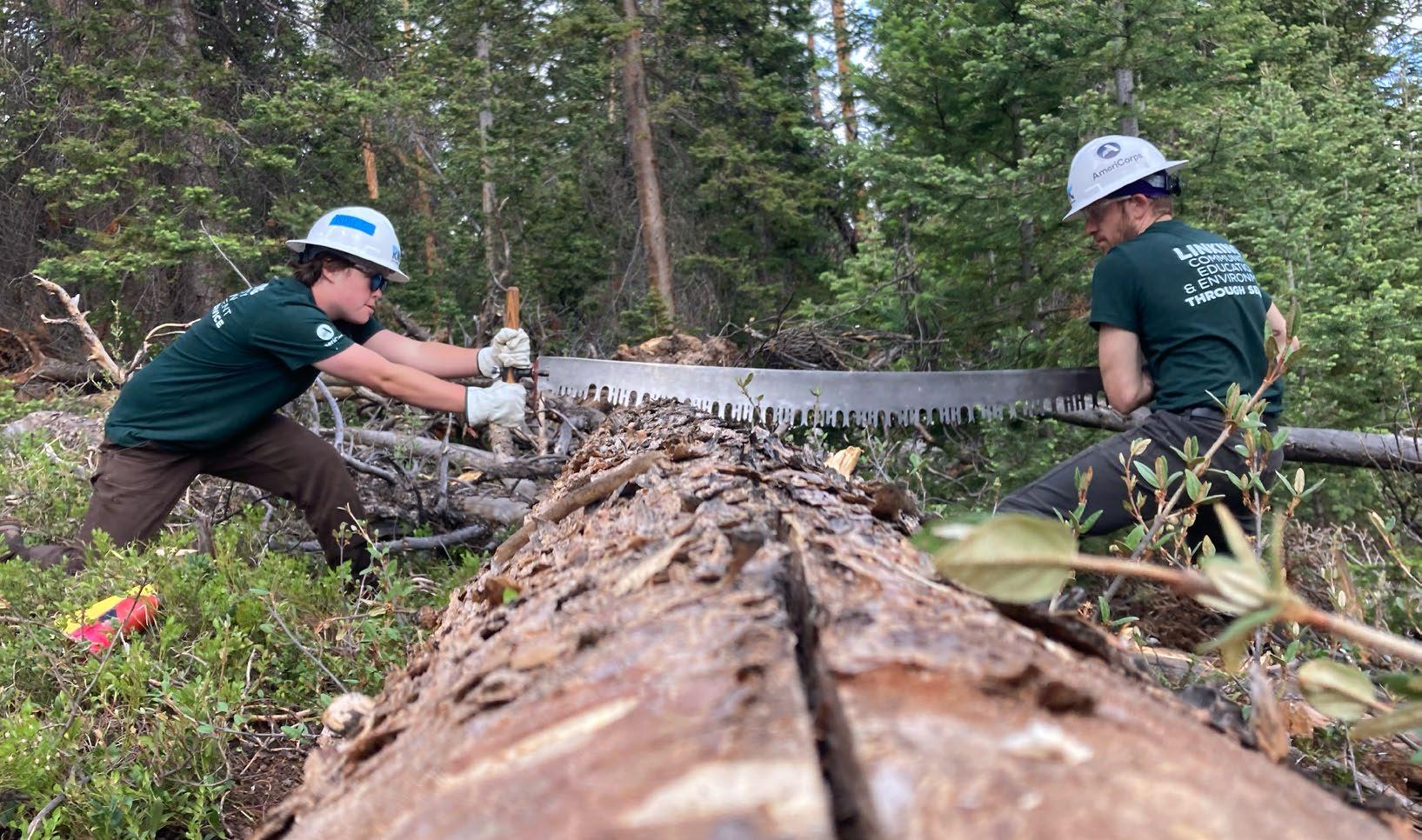

What is a Fourteener?
fȯr-ˈtē-nər\ noun
A mountain with an elevation of at least 14,000 feet.
continued on page 24
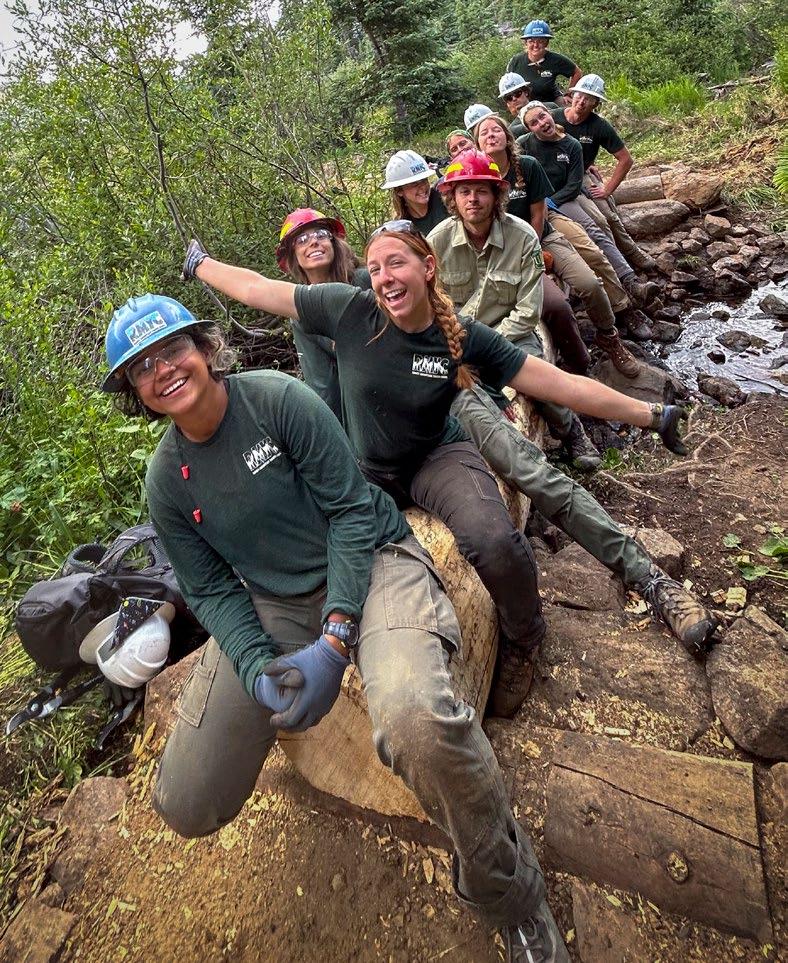
Maintaining trails includes extracting huge boulders. Last year, more than 2,000 conservation service corps crew members improved or maintained 752 miles of trails and mitigated 5,000 acres of wildland fire zones across Colorado.
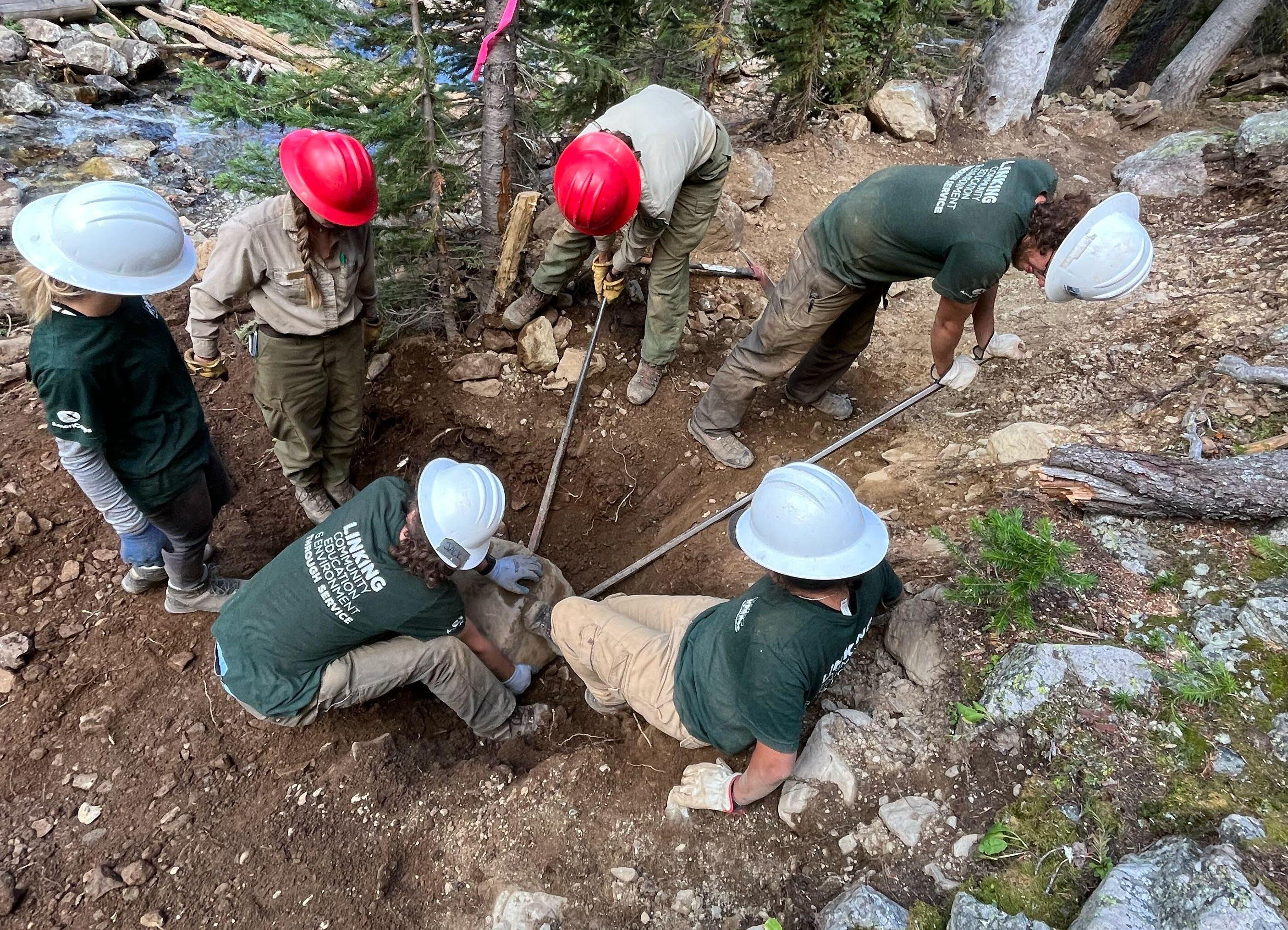
Combine RMYC’s work with that of the state’s other youth corps and, like the trails they maintain, things are going nowhere but up. CYCA is coming off its biggest year ever. “Investment in the corps has tripled in the past three years, from $3 million annually to more than $10 million,” said Segerstrom, who is working with project partners to keep investing in the state’s eight associations and is maintaining corps relations with such entities as the Great Outdoors Colorado lottery trust, the Bureau of Land Management, Colorado Parks and Wildlife, and more.
The 2018 recipient of the Governor’s Service Award for Outstanding Community Leadership, Segerstrom is a former wilderness ranger and wildland firefighter with the U.S. Forest Service who got his start with RMYC. He spent several years leading RMYC’s chain saw and Continental Divide Trail crews, worked on a fourteener high-altitude trail and archaeology crew, and
eventually became the director of RMYC’s conservation corps program. Now at CYCA he manages and disperses the two largest AmeriCorps grants in Colorado and supports a corps sector that has grown to a collective operating budget of $28 million in the state.
All this is good news for CYCA’s eight accredited conservation corps like RMYC, who are eager to pitch in and help. “The cutbacks our partner organizations are facing are definitely unfortunate, but we look forward to picking up whatever slack we can with our land management agencies by continuing to offer meaningful outdoor service opportunities to our crew members,” Banks said. “It’s a win-win for everyone.”
Eugene Buchanan is a former reporter for the Denver Business Journal and 14-year publisher and editor in chief of Paddler magazine. His freelance articles have been published in The New York Times, Men’s Journal, Outside, National Geographic Adventure, Forbes Life, and more. He lives in Steamboat Springs.









































A summer potluck is a fun and easy way to gather with friends in your backyard without having to do all the food prep yourself. This month we collaborated with electric co-op employees from across Colorado for a virtual side dish recipe swap. These tried-and-true recipes will get you started at your own backyard party or help you decide what to bring to your next cookout.

By Alliy Sahagun Gunnison County Electric Association

Ingredients
3 lb round red potatoes, cut into 1" pieces
1 small red onion, cut into wedges, 1/2 cup
6 cloves garlic, minced
2 tbsp olive oil
• 1 cup frozen whole kernel corn
Dressing
3/4 cup mayonnaise
• 2 tbsp cider vinegar
• 1 oz envelope dry ranch salad dressing mix
• 1/4 tsp cayenne pepper, optional
• 1/2 cup celery, sliced on the bias
• 3 hard-cooked eggs, peeled and chopped
• 1 avocado, halved, seeded, peeled, and chopped, optional
Salt, to taste
• Ground black pepper, to taste
• 1 bunch Italian flat leaf parsley, coarsely snipped, optional
Instructions
Preheat oven to 425 degrees.
Serves 12
Place potatoes, onion, and garlic on a 15" x 10" baking pan. Drizzle vegetables with the olive oil and toss to coat. Roast uncovered for 20 minutes. Stir vegetables and add corn. Roast for 15 to 20 minutes longer, or until vegetables are tender and brown.
For dressing, in large bowl whisk together mayonnaise, vinegar, salad dressing mix, and, if desired, cayenne pepper.
Add roasted vegetables and toss to coat. Stir in celery, eggs, and avocado. Season to taste with salt and black pepper.
Transfer to a serving dish. If desired, sprinkle with parsley.
Serve warm or chilled.




Anne Boswell Southeast Colorado Power Association
Ingredients
1 lb bacon | grits | 5 tbsp butter | 2 eggs | 1 to 2 cups shredded ch
Instructions
• Cook the bacon to your desired level of crispiness. Roughly chop the cooked bacon and set aside.
• Prepare 1 1/2 cups of grits according to the package instructions. Salt and pep per to taste.
• Once the grits are cooked, stir in the butter and melt.
• After the grits are slightly cooled, whisk the eggs into the grits.
• Lightly spray a large casserole dish with cooking spray. Pour the grits into the dish and sprinkle the cheddar cheese and bacon on top
• Bake at 350 degrees for approximately 25 minutes.

By Avery Parson Mountain View Electric Association
Ingredients
• 1 box (12 oz) tricolor rotini pasta
• 1 packet Italian salad dressing mix
• ¼ cup white vinegar
• ½ cup olive oil 10 oz cherry tomatoes, halved
• 8 oz mozzarella pearls
• 6 1/2 oz can sliced black olives, drained
• ½ red onion, diced
• 1 cucumber, peeled and chopped
By Rita Sanders Grand Valley Power
Slaw
2 bags angel hair cabbage/slaw
• Roasted peanuts (not dry roasted), to taste
Dried cranberries, to taste
• 1 large red onion, diced
• 1 bunch cilantro, chopped
Instructions
Mix slaw ingredients in a large bowl. In a separate bowl, whisk together all dress ing ingredients until combined. Pour the dressing over the slaw before serving. Serves 12
Instructions
Cook the pasta according to package instructions until al dente (about 6
While the pasta cooks, prepare the Italian dressing by mixing the packet with white vinegar, olive oil, and water as directed.
Drain and rinse the pasta under cold water, then transfer it to a large mixing bowl.
Add the cherry tomatoes, mozzarella pearls, black olives, diced red onion, and cucumber. Pour the prepared Italian dressing over the salad and mix well
Refrigerate for at least 2 hours or overnight to enhance flavors. Serve chille
1 tbsp chili oil or Mongolian fire oil
• 1 hefty pinch red pepper flakes
• Pinch of salt
• Cracked black pepper, to taste
• 1/3 cup rice vinegar
• 2 tbsp sesame oil
• 1/2 cup mayo



By Becky Jensen
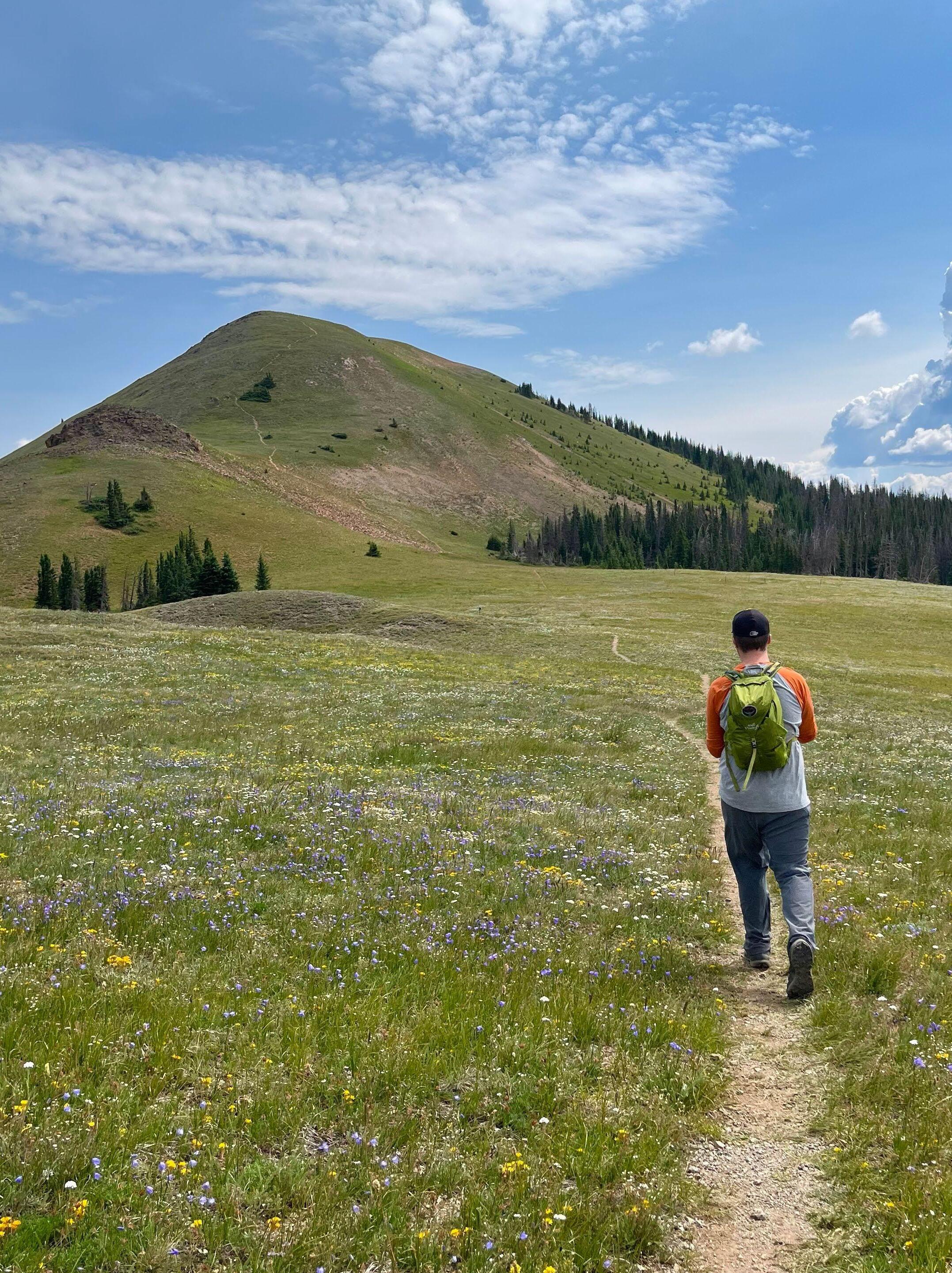
Prepare to slow down and watch for wildlife — including bighorn sheep on rocky cliffs and bold kayakers in the whitewater — as you drive State Highway 14 through Poudre Canyon northwest of Fort Collins. Summer is a great time to experience everything this 40-mile canyon and the Cache la Poudre River have to offer.
Consider a getaway to this special landscape in the heart of Poudre Valley REA’s gorgeous service territory.
Hiking opportunities abound in Poudre Canyon. Popular trails in the lower canyon near Fort Collins include sprawling Hewlett Gulch and the more challenging Greyrock Mountain
To avoid crowds and summer heat, head west to the upper canyon, where you can quickly gain access to the cool alpine and stunning wildflowers on Montgomery Pass Trail
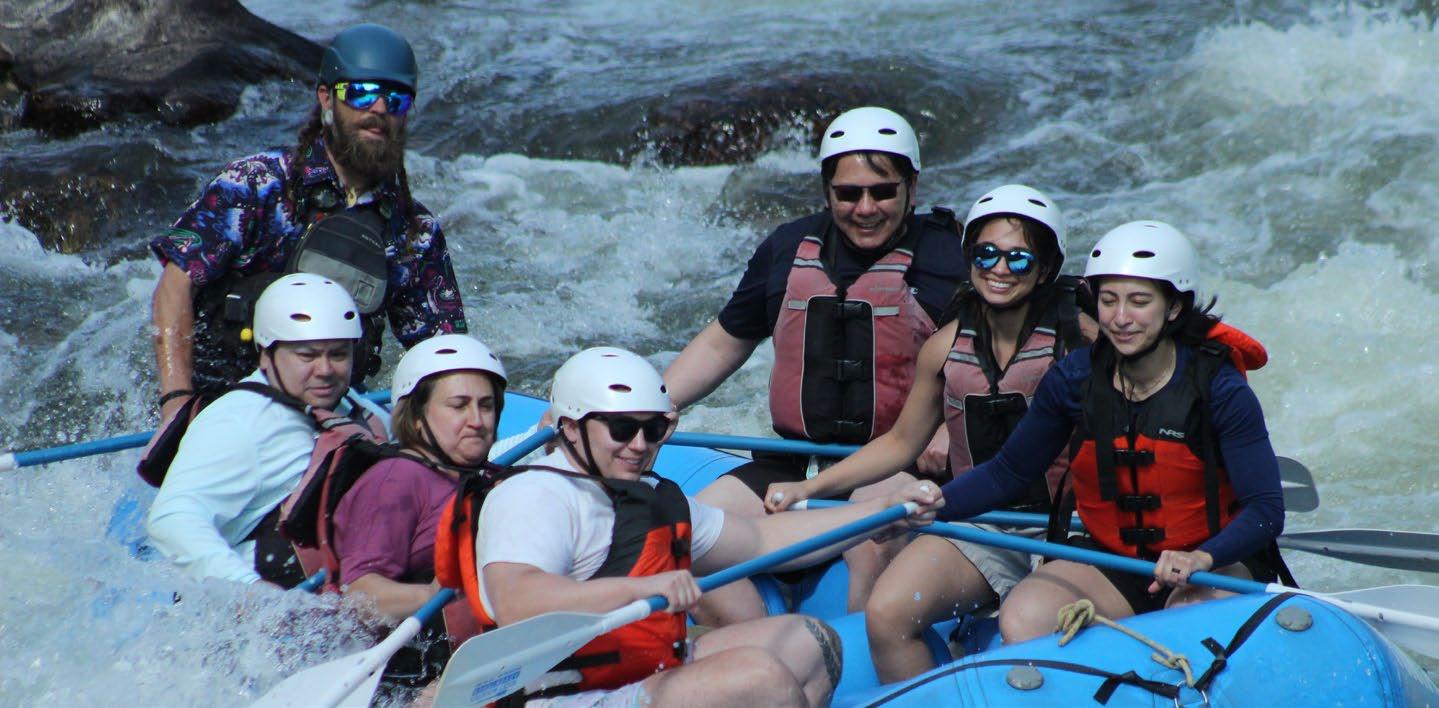
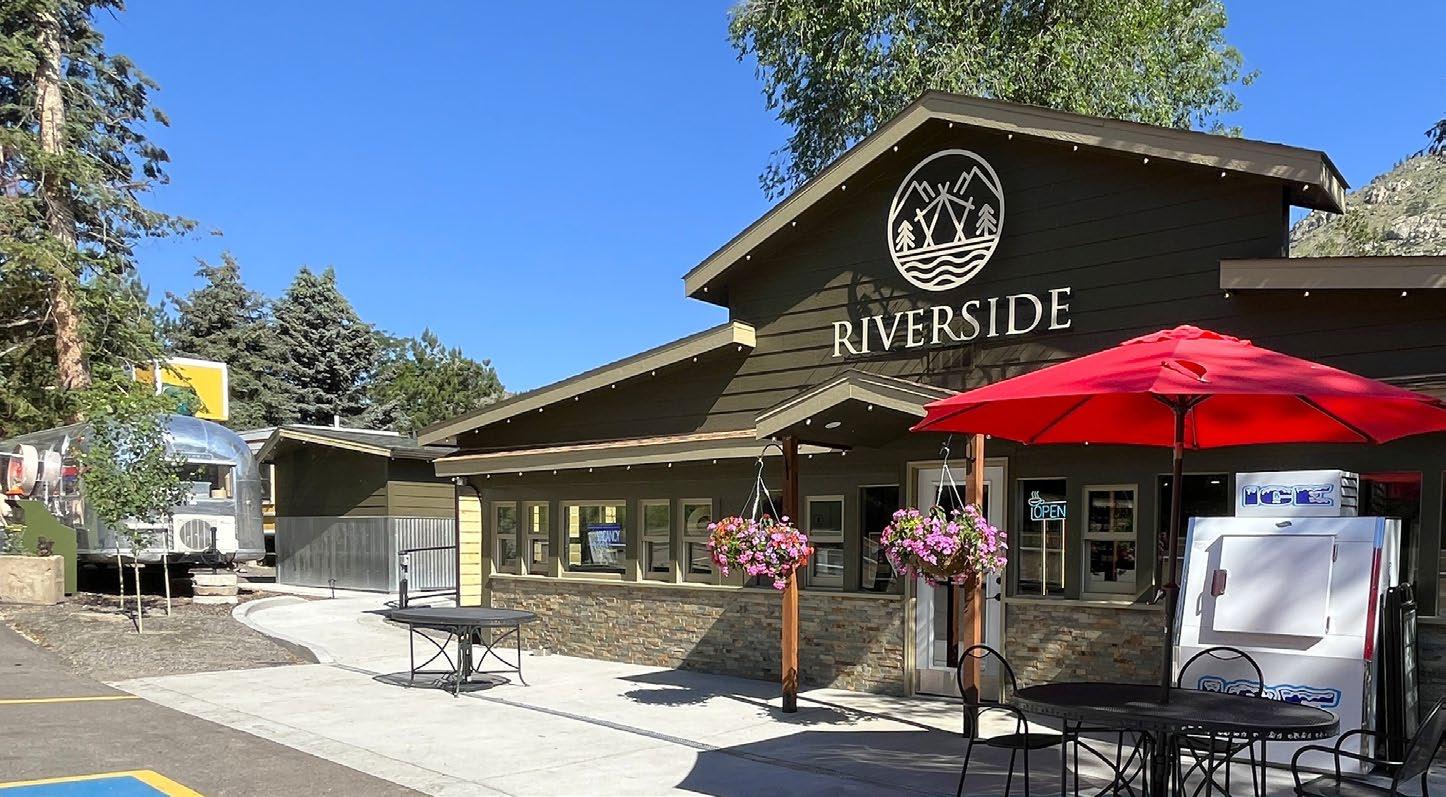
Whether you’re a music lover or simply out for a Sunday drive, be sure to stop at Mishawaka Amphitheatre, the legendary music venue, restaurant, and bar built in 1916. You can’t beat the eats served up at the Mish — a local favorite — especially when paired with a cold beverage on the riverfront deck. Better yet, join the Mish for what it does best: a live concert under the stars. View their summer lineup at themishawaka.com
Experienced rafters and kayakers flock to Poudre Canyon for its world-class whitewater. Regardless of your skill level, you can enjoy unforgettable Class II, III, and IV whitewater rafting, or take kayaking lessons with the licensed guides at Rocky Mountain Adventures out of Fort Collins. Book your trip at shopRMA.com
Poudre Canyon boasts multiple campgrounds in Arapaho and Roosevelt National Forests and offers dispersed camping along select roads. If you want a more comfortable base camp, book a tiny home, cozy cabin, or luxury glamping tent at Riverside Colorado, an inviting new canyon resort, located three miles downstream from the Mishawaka. Find more at riversidecolorado.com.
by Becky Jensen
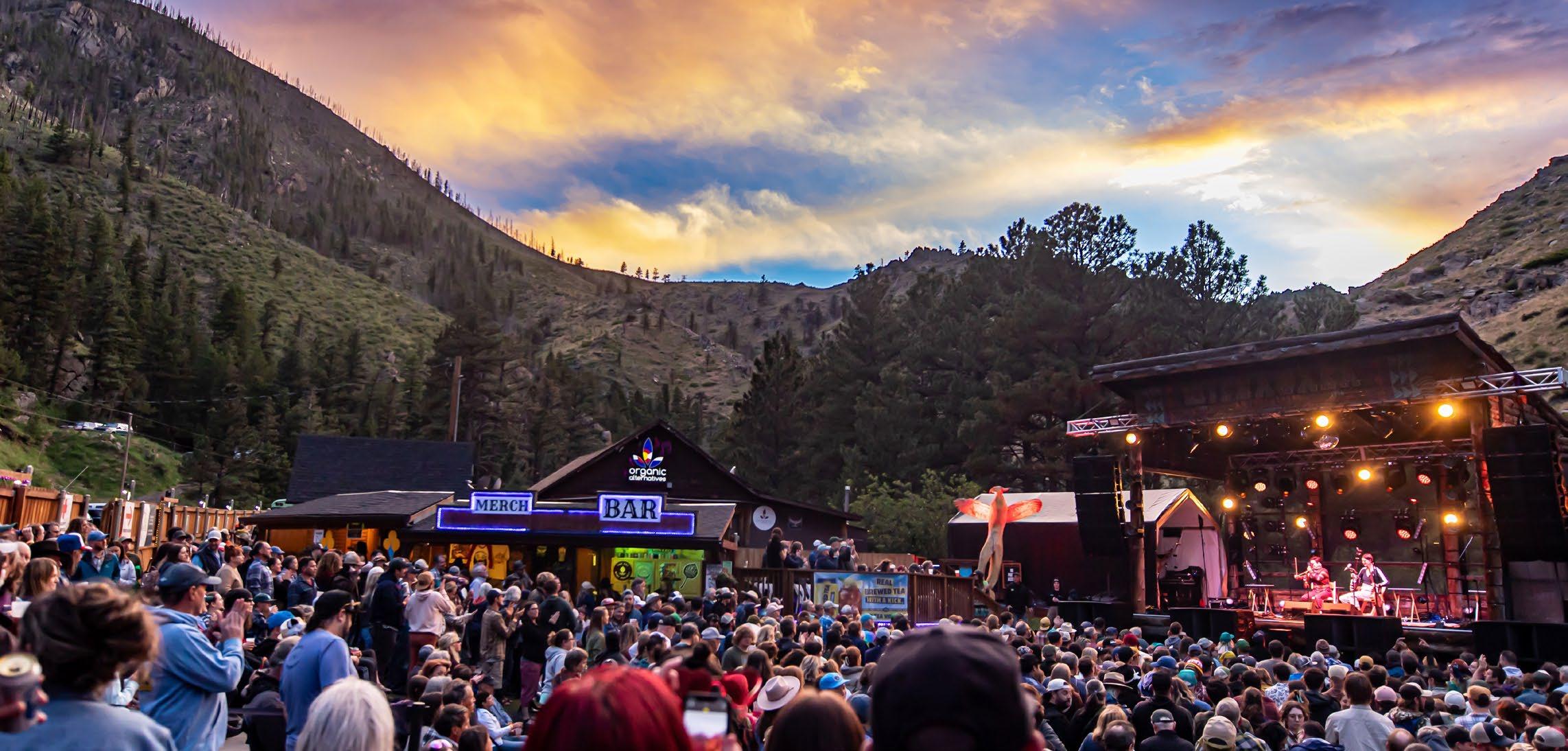

Ten minutes. That’s not a lot of time, but at Colorado’s elevation, that’s all it takes for some people to get a severe sunburn. July is UV Safety Awareness Month and a great time to remember the risks of unprotected sun exposure. Playing it safe in the sun is important for everyone this month and year-round. Regardless of the duration, unprotected sun exposure can have short-term and lasting effects.
Sunburns can make your skin feel hot, tender to the touch, and tight. Immediate symptoms of a sunburn are usually temporary, but over the long term, repeated sunburns can increase your skin cancer risk and lead to leathery skin, dark spots, and wrinkles. Just one blistering sunburn in childhood can double your chances of developing deadly melanoma later in life.
Ten minutes is all it takes to get a sunburn. Take five minutes before your fun in the sun to apply sunscreen and avoid the burn altogether.
Vacations, summer sports, pool time, and backyard barbecues are all signs of a fun summer. Don’t let a sunburn ruin it. Always practice sunsafe strategies no matter the length of exposure.
Seek shade as often as you can, especially between 10 a.m. and 4 p.m. when the UV index is at its highest.
Wear protective clothing: wide-brim hats, UV blocking sunglasses, and SPF rated long-sleeved shirts and pants.
Apply broad-spectrum sunscreen. Use SPF 30 or higher and reapply every two hours. Reapply more frequently if you are in the water or sweating a lot.
Use extra caution near water, sand, and concrete. Reflective surfaces can increase UV intensity and exposure.
The sun’s rays can go through windows, clouds, and light clothing. Daily sunscreen can reduce your risk of UV exposure accumulation.
ACROSS
1. Fad or frenzy
5. Opportunity, so to speak
9. Infiltrator, perhaps
14. Traveling, say
15. Spoonbills do it
16. Pillow filler
17. Juniors, e.g.
19. Fractious
20. Lumberjack’s cry
21. Big beef piece
23. Border duty
25. What tellers do
30. Advent
32. Like a span of oxen
33. “The Water Diviner” actor
36. Redressing
38. Communal pronoun
39. Farmhand, at times
40. Call, in Vegas
41. Broadway handouts
44. Updates a blog
46. Get another magazine
47. Weapon for a trooper
49. Frees from doubt
51. Extreme cruelty
54. Checklist bit
56. High beam? 58. Sousaphones
62. Strip of leaves 64. Word with secret or press
65. “So be it!”
66. Trap starter
67. Frat letter
68. Indicates yes
69. Grown grigs
1. Go on a tirade
2. Expect anon
3. Type of radiation
4. Something to tweeze
5. Overshadows
6. High-quality table wood
7. Coleridge works
8. Pine secretion
9. Became exhausted, with “out”
10. Be a bad witness
11. Campaign creations
12. Trawler attachment
13. Venture
18. Paris flower
22. Library gizmo
24. Savage
26. ___ of hope
27. Out of whack
28. Church dogma
29. A sphere lacks them
31. Breaks the news
33. Coconut product
34. Recreation center posting
35. Grad school grillings
37. Western Colorado sights
39. Bathroom cleaner?
42. “___ don’t say!”
43. Latte preparer
44. Bicycle
45. Hole in the head
48. Empire builders
50. Chair or car style
52. In need of freshening
53. Mercury, for example
55. Office comm.
57. Pilates count
58. Body image, briefly?
59. “Yuck” cousin
60. Quilting social
61. Carpenter at the picnic?
63. Served dinner
© Lovatts Puzzles
Answers on page 34.














• January Nonalcoholic whiskey: Barbara Humbracht, EEA
• February Sushi supplies: Patrice Diem, PVREA
• March Bird book: Karen Dobos, GVP
• April Kid crafts: Barbara Humbracht, EEA
• May Ice cream bowls: Whitni Moebius, GVP










This spring, Colorado Country Life readers responded with generosity to a call for support, and that support is making a real difference. Your donations are bringing a fresh start to families and homes across Navajo Nation.
Ten volunteer linecrews from eight Colorado electric co-ops are participating in Light Up Navajo VI this summer. Each crew spends one week connecting homes that have never had power. Light Up Navajo is a mutual aid initiative of the American Public Power Association and the Navajo Tribal Utility Authority.
Readers helped raise $3,800, which is going directly toward buying a refrigerator for each home Colorado crews help electrify. Your generous donations are offering families safe food storage and a life-changing upgrade in daily living.
Four Colorado electric co-op linecrews have traveled to Navajo Nation to electrify homes, with five more scheduled to go this month. We will share more updates once the trucks roll home.
Thank you for your generous support.
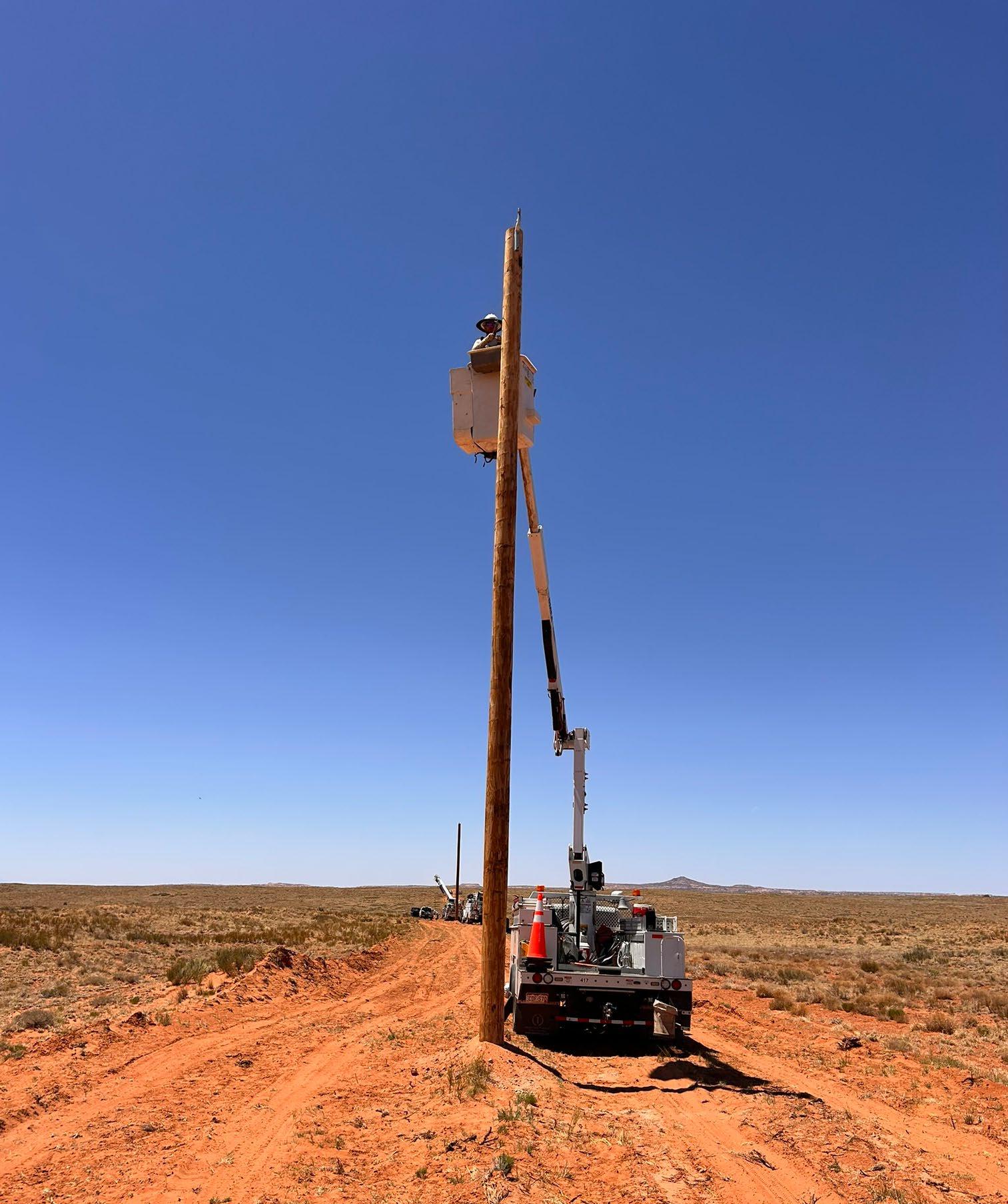
Your next customer is just a page away.
Advertise in Colorado Country Life and get your business in front of 175,000+ engaged readers across Colorado every month.
We’ve got print and digital options to fit your goals and your budget.
Let’s chat about what’s possible.
Email us at advertising@ coloradocountrylife.org.

Picture YOUR BRAND here!


By Gaylene Garcia Granger
One of the best things about summer in Colorado is the abundance of tasty goods found at local farmers markets in cities and towns across the state. Unlike the outdoor markets of old, which mainly featured homegrown produce and meat, today you can meander throughout almost any local farmers market and find arts and crafts by local artisans, specialty food products, home brews, and live entertainment. Here are a few Colorado markets that are sure to fill your basket and your day with joy.
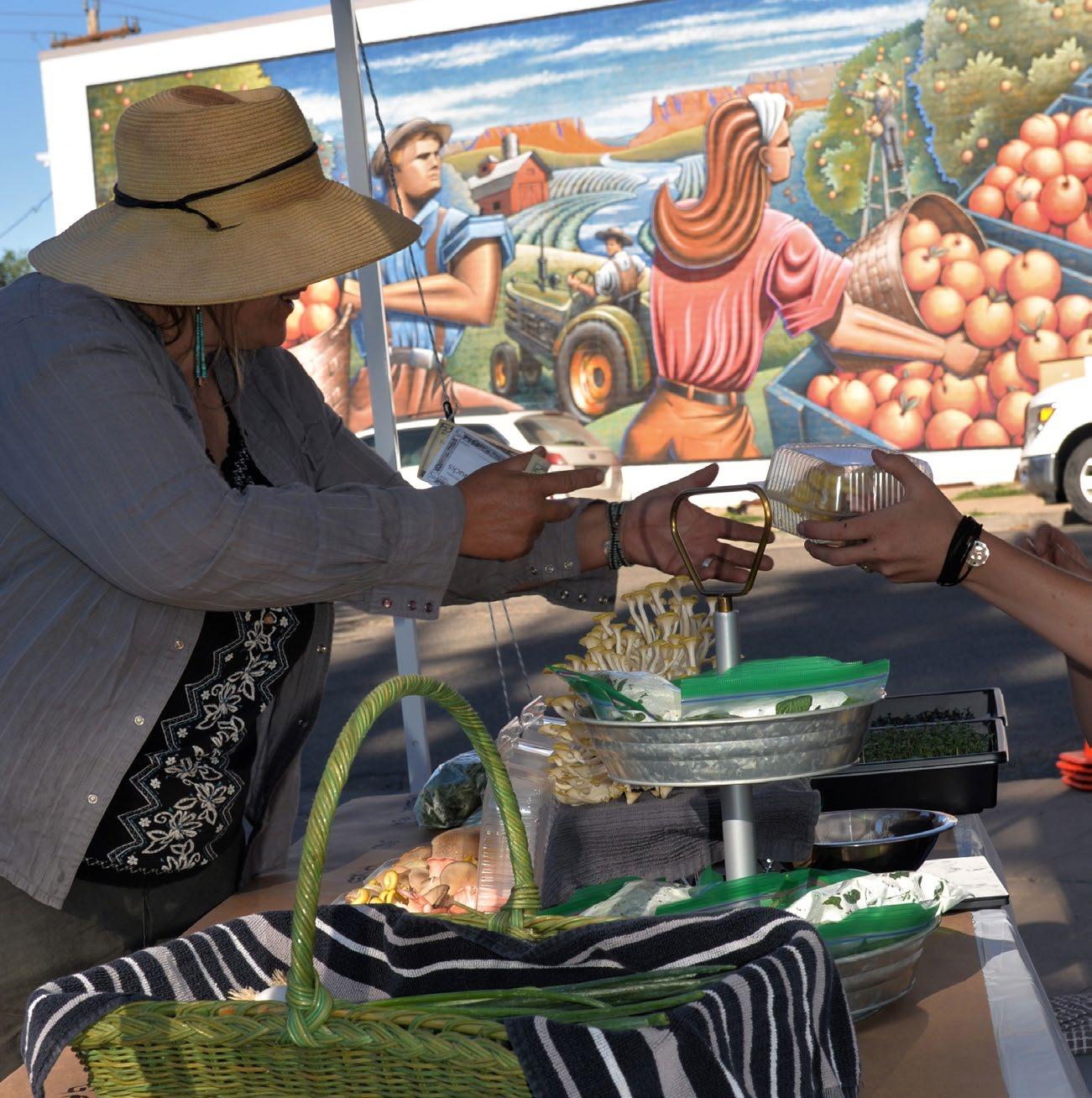
Cortez Farmers Market in beautiful Montezuma County claims to be the oldest market in the state of Colorado, founded in 1973 by Cortez native Bessie White. Her daughter, Cheryl Floyd, still works a produce stand selling her mom’s famous jams and jellies. Word is that the chokecherry is the best.
The market is held at a new location at 601 N. Mildred St. There are 48 vendors who sell fresh produce, coffee, honey, and beef, bison, and yak meat. It’s a market rich in history with plenty of room for the new and trendy. One vendor, Jewelry by Haley, is only 13 years old, but she is a town favorite with her colorful beaded jewelry and art. In September, the Cortez Farmers Market will host a community outreach bike rodeo with local police officers, who will give out 50 bike helmets to local kids.
Visit the market on Saturdays through October 25. Find more information online at cortezfarmersmarket.com.
The Market on Main in Grand Junction is a must visit on your summertime travels. The event typically attracts 5,000 visitors per week with over 100 vendors, 17 of which are local farmers from the Grand Valley. These numbers typically peak in late July when Palisade peaches are widely available on the Western Slope. At the market, you’ll find food vendors, local butchers, bakers, and artists. They are all on Main Street between Third and Seventh streets. According to David Goe, community engagement manager, “We host themed nights and have entertainment past sundown. We also team up with local downtown businesses for special activities like the 600 Block Party.” Market on Main is on Thursday evenings from July 10 through September 25. Find more information online at downtowngj.org/events/market-on-main.
Fort Collins Farmers Market is all about Colorado grown. All vendors grow their own produce, raise their own animals, or craft and package their own food. According to Marketing Director Katie Krull, “The market is great, they always have friendly vendors who work hard to produce different things that go with the seasons. For example, Sweet European Treats will use fresh produce from the market and make unique desserts with them.”
The Fort Collins Farmers Market can be found at 1001 E. Harmony Rd. and runs rain or shine on Sundays through November 9 and Wednesdays through September 24. For more information, visit fortcollinsfarmersmarket.org.
The Woodland Park Farmers Market started in 1990 when the original founders recognized that there were not a lot of options for fresh produce due to the average 8,500-foot elevation of Woodland Park and the surrounding small towns. Today, they’re keeping their cool and selling their goods at Memorial Park, with a stunning backdrop of snow-capped Pike’s Peak in the distance.
Here, customers will find a wide variety of cottage kitchen bakers and producers, fresh eggs, domestic and imported cheeses, in-season produce, local coffee roasters, food trucks, and Colorado beef, yak, and pork, plus local musicians providing entertainment. It retains one of its original six vendors, La Baguette, and has also developed a young entrepreneur program to host young people ages 8-18, to sell their handmade foods and crafts.
The market has received many awards over the years, from being voted one of the top farmers markets in the nation, to a multiyear/multicategory winner for being the best place to meet locals, the best place to hear live music, best outdoor event, and best place to cool off during the summer. The market begins the first Friday in June and runs through the last Friday of September. For directions, visit wpfarmersmarket.com



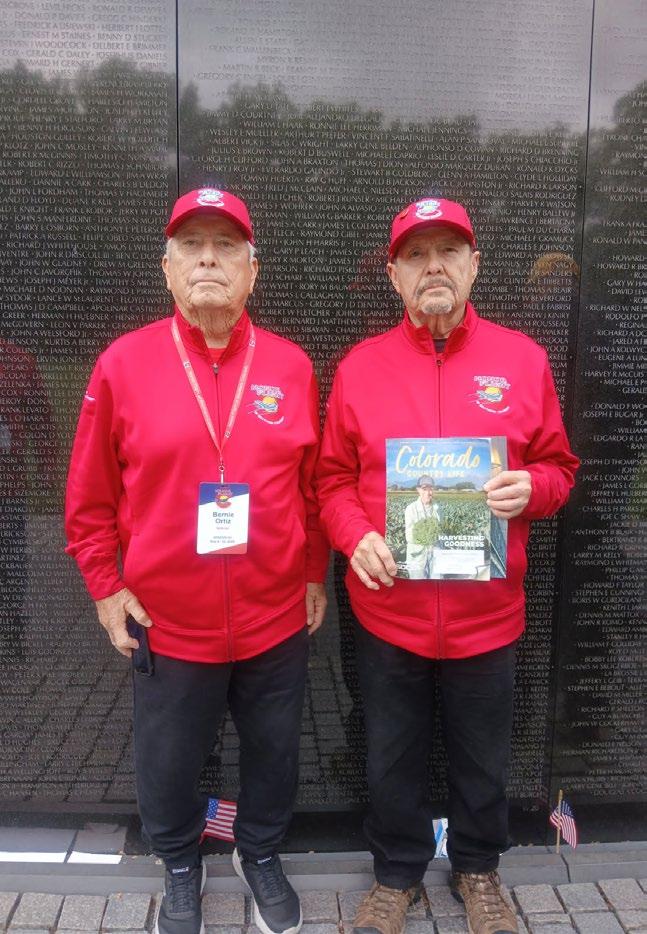
San Isabel Electric Association member Herman Arellano (right) and brother-inlaw Bernie Ortiz travel to Washington, D.C., on Honor Flight #20 recognizing them for their service in the Korean and Vietnam wars. We at CCL thank you for your service and for bringing the magazine on this important trip.
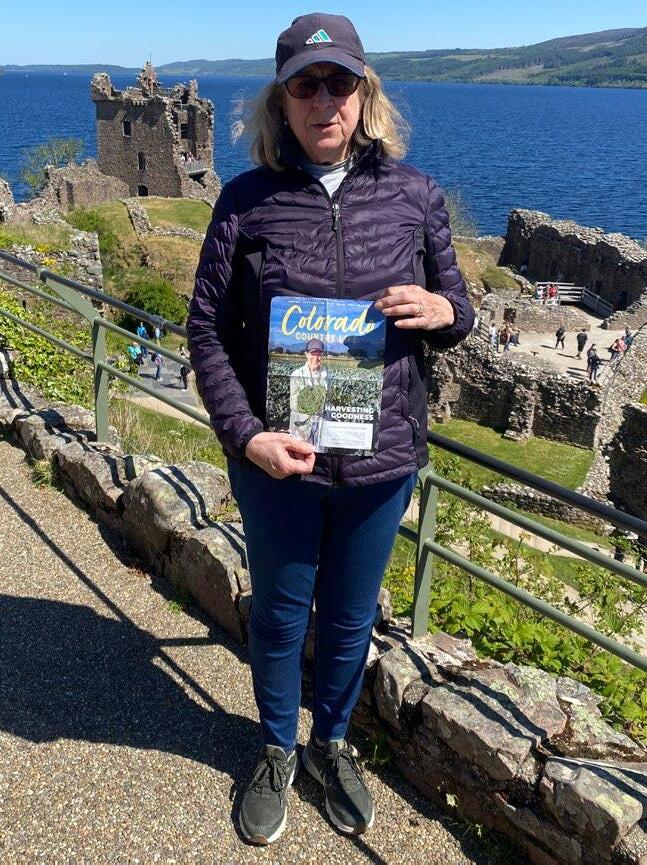
Jan Hopp, a Sangre de Cristo Electric Association member, visits the remains of the Urquhart Castle in Scotland with her copy of CCL.
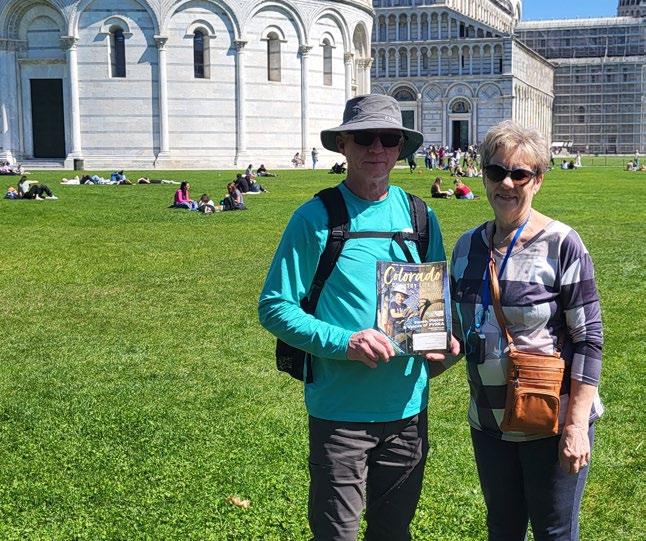
Ron and Joy Harper enjoy the Tuscan countryside and historical Italian sites, including the Leaning Tower of Pisa. The Harpers are members of Poudre Valley REA.
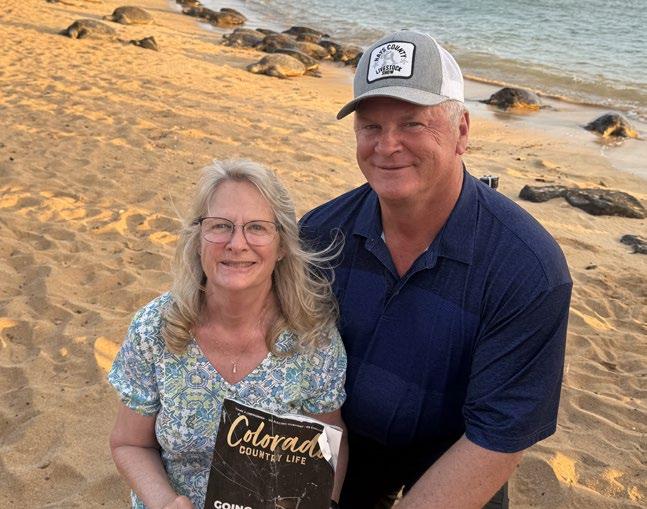
Mountain View Electric members Curtis and Kim Crews bring their copy of the magazine on their trip to Kauai, Hawaii, to celebrate their 27th anniversary with the turtles on Poipu Beach.
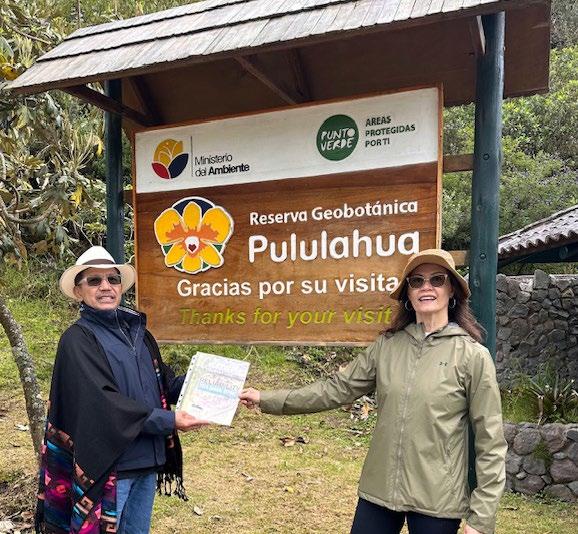
On their way to the Galápagos Islands with their latest issue of CCL, Mountain View Electric members Joe and Winnie Vasquez stop for a photo at Ecuador’s Pululahua Geobotanical Reserve, north of Quito.
Show us where you enjoy CCL for a chance to win! Take a photo of someone (or a selfie!) with the magazine and share it with us on our website at coloradocountrylife.coop. Each month we’ll draw one photo to win $25. See all the submitted photos on our Facebook page, @COCountryLife
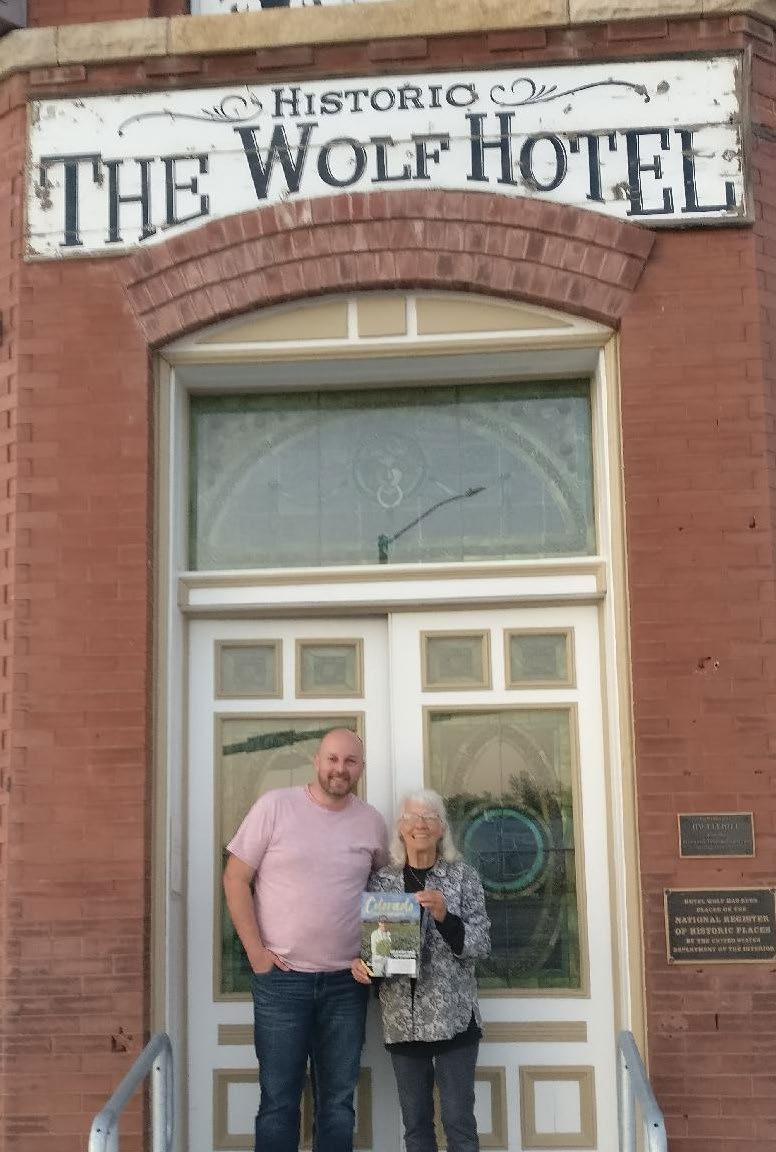
Southeast Colorado Power Association member Judy Davis holds her copy of CCL with The Wolf Hotel owner Chris McCord in Ellinwood, Kansas.
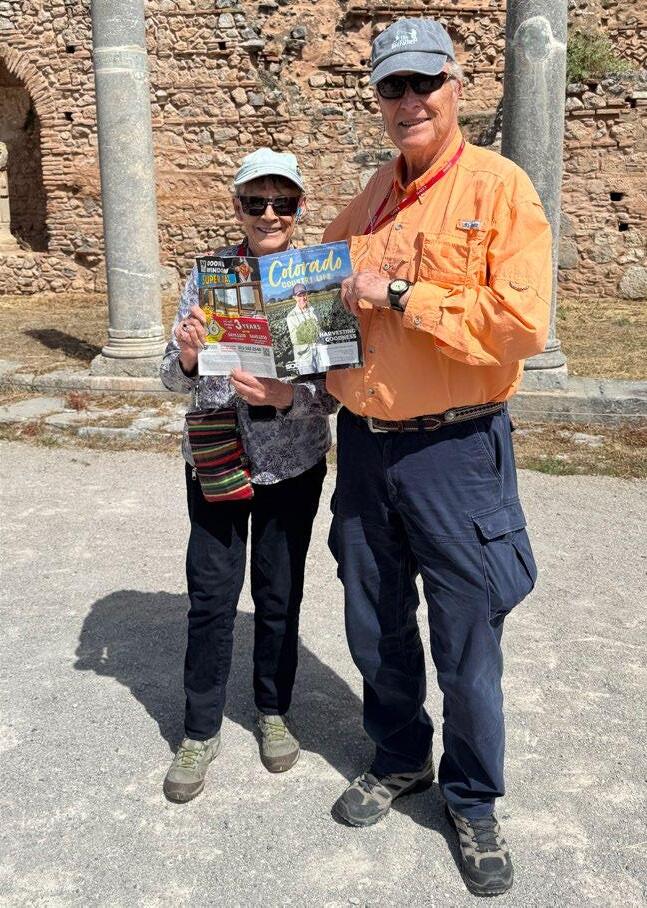
Art and Linda Wilson celebrate their 65th wedding anniversary in Greece, and visit Olympic Stadium in Olympia. The Wilsons are members of Sangre de Cristo Electric Association.
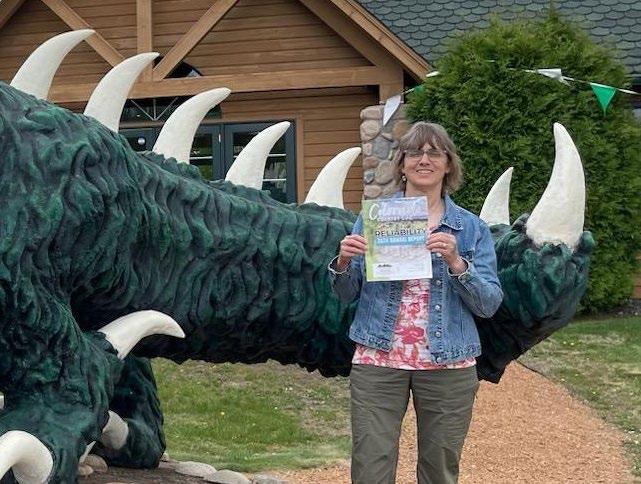
Mountain View Electric Association member Lisa Hatfield brings CCL on a visit to Rhinelander, Wisconsin. Her husband, Mark, is behind the camera taking her photo.
Wildfire risk is an undeniable part of living in the rural West, but it’s a fight we’re facing head-on.
At Tri-State G&T, we deploy data-driven monitoring and wildfire mitigation strategies to identify and mitigate risk to protect our communities and the critical infrastructure they rely on. We’ll do anything within our power to protect the people and places our members call home.
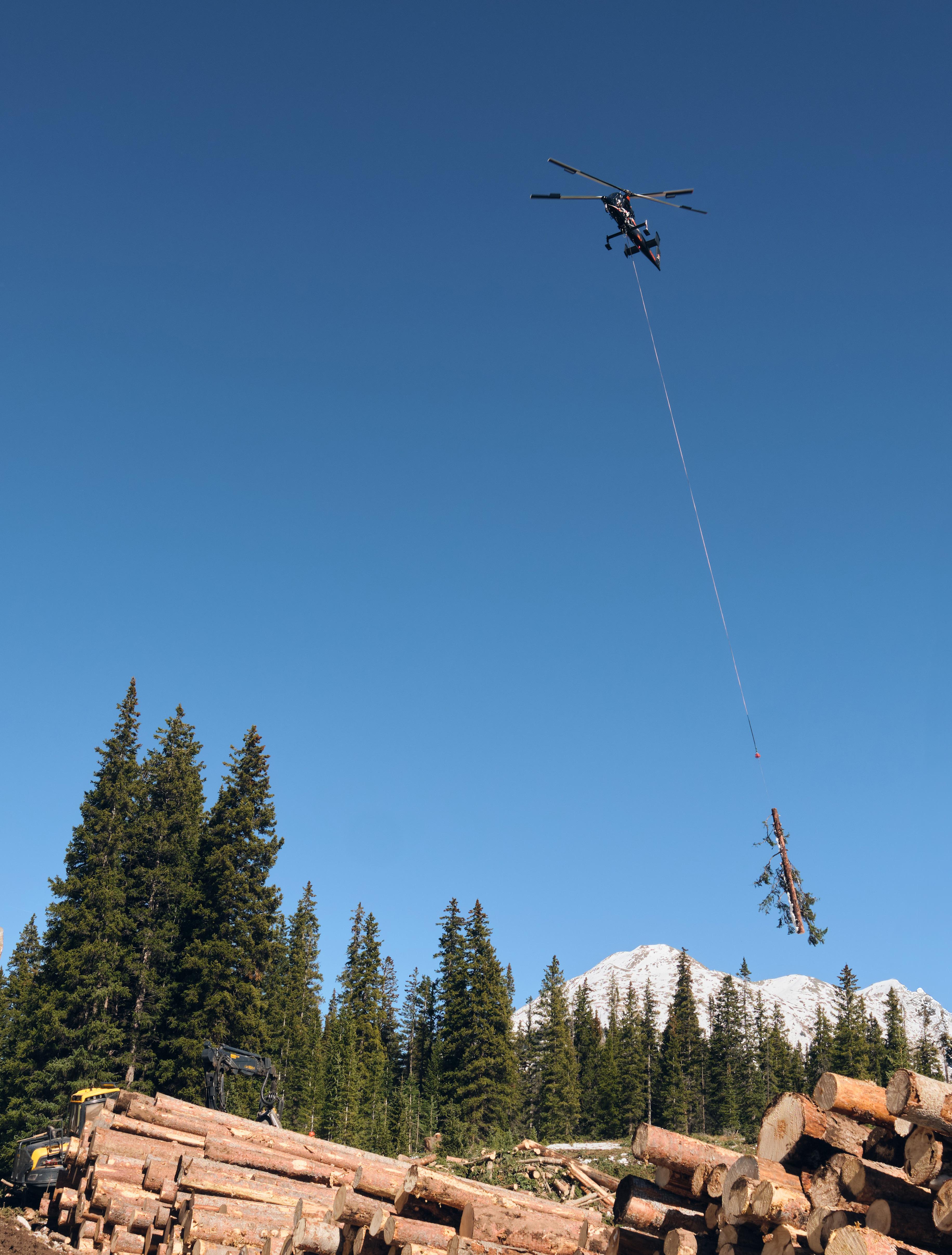
WHATEVER THE FUTURE HOLDS, WE’LL POWER IT.®
Learn more about our year-round wildfire mitigation program here:



